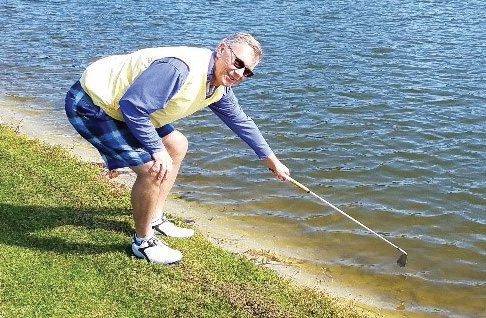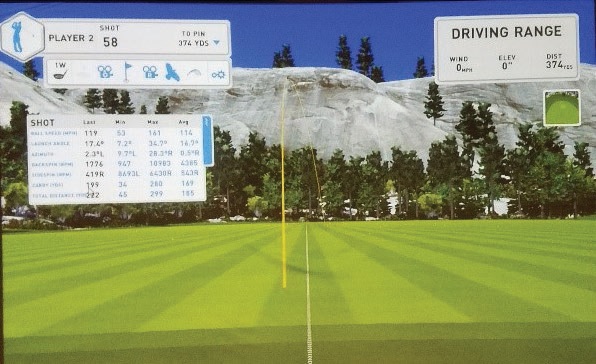Fore the love of tribology!
Michael Anderson | TLT President's Report April 2018
Golf is one of many sports with a tribological focus.

Next time you slice your ball into a pond, blame it on tribology.
Tribology plays an important part in the world of sports—from stronger materials for improved safety upon impact to special surfaces designed to reduce or increase friction, drag and/or wind resistance. But no sport involves tribology more than my favorite: golf. Yes, golf. And now as spring arrives, golfers religiously flock to the course like the swallows to Capistrano.
Mark Twain referred to golf as a good walk spoiled. I think of it more as a series of mistakes punctuated by an occasional miracle. Nevertheless, golf is one of the most fascinating games played by men and women of all ages. It doesn’t take strength but coordination. One shot can bring you jubilance and the next one total frustration. But how does taking a long stick with an intricately designed head on the end actually make the golf ball take flight? I am sure you can guess: tribology!
Let’s first look at the golf clubs. There are three major types of golf clubs: woods (though today made of metal and/or composite materials), irons and putters. Each has its own function. Woods are designed for distance: the more, the better. Its design and materials are used to impart a lower amount of spin to get the best amount of height, known as carry, and allow the ball to roll when it hits the ground.
Irons are designed to impart a higher amount of spin. Spin gets your ball to go up into the air and travel a specific amount of distance to reach the putting green. Spin also makes the ball stop when it hits the ground. What makes the ball spin? Tribologically speaking: friction. This is why you need to hit the ball on a descending part of the stroke. You must hit down to get the ball to go up. Ironically if you try to hit the ball on the upswing, the ball will go down, known as topping the ball.
Lastly, the putter is designed strictly for precisely rolling the ball along the surface of the putting green, and if you do it right it drops out of sight in a little hole. Here the spin is in reverse to enhance forward rolling.
What is interesting and a lot of fun is trying these new clubs at a golf store’s indoor simulator, which includes hitting into a screen showing a hole from a famous golf course. Through the use of electronics, many parts of the golf shot can be analyzed, including ball and swing speed, launch angle, backspin, sidespin and distance. The flight of the ball is shown nicely on the screen, including the bad shots that end up in the woods. But, alas, there was no magic club that made me hit the ball farther and straighter. I left with the same driver I have been using for 10 years.
 Simulators can display a tribologically well-executed golf shot, or not.
Simulators can display a tribologically well-executed golf shot, or not.
But back to tribology. In a golf swing, the ball is in contact with the face of the club for about 450 millionths of a second. I wonder how this is measured. But in this very short time, friction plays a big part in how the ball travels in the air. Have your swing come a little inside out and the friction between the face of the club and the ball will cause the ball to curve left (hook); a little to the outside in and the ball curves to the right (slice). So when that water hazard is on the right side of the fairway, we swing to the left to avoid it, and the ball tends to curve more so to the right and into the water. It doesn’t seem logical and is certainly not fair.
So the next time you are on the golf course, just enjoy yourself. And if you happen to slice it in the water hazard, blame it on tribology. Because this is just one more way to prove that tribology is everywhere.
 Mike Anderson is area manager Asia Pacific/Latin America for Falex Corp. in Sugar Grove, Ill. You can reach him at manderson@falex.com
Mike Anderson is area manager Asia Pacific/Latin America for Falex Corp. in Sugar Grove, Ill. You can reach him at manderson@falex.com.